Certified nursing assistants in Alabama are one among the members of a health care team that work alongside registered nurses in health care facilities. CNA’s are anticipated to increase in demand by about twenty-one percent between 2012 and 2022 based on the estimates of the Bureau of Labor Statistics. This is favorable entry level health care job for those with interest in the health care industry. A popular question for those interested in this occupation is, “What is the CNA Salary in Alabama?”
The average annual income of certified nursing assistants in Alabama is approximately between $18, 720 to $22, 880. In comparison to the average salary for CNA in United States, the salary of CNAs in Alabama is lower than other states. The mean hourly rate is about $10.38. The value of salary varies in different cities of the state because of some factors and these include the following:
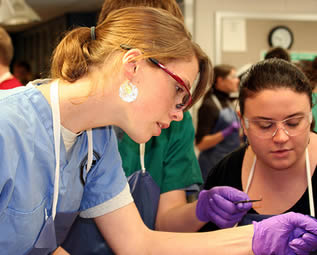 – Experience – it is advantageous if one has more experience because he or she will be earning more income compared to the inexperienced ones. Other than getting higher pay rate for having work experience, CNA can as well be offered with more benefits. CNAs with experience of less than one year can earn about $20, 000 per year up to $30, 000 depending on the work location. Workers having ten years of experience can earn an average annual income up to $32, 000.
– Experience – it is advantageous if one has more experience because he or she will be earning more income compared to the inexperienced ones. Other than getting higher pay rate for having work experience, CNA can as well be offered with more benefits. CNAs with experience of less than one year can earn about $20, 000 per year up to $30, 000 depending on the work location. Workers having ten years of experience can earn an average annual income up to $32, 000.
– Location – individuals working in rural areas receive lesser pay rate compared to those who work in cities. The location is also a factor with regards to the cost of living. This means that the lower the cost of living is, then the lower the salary a nurse aide receives. In this connection, CNAs in Alabama earns lower salary because this state is regarded to have lower cost of living.
– Employer – salary depends on the type of employer from whom you are working for as CNA. Usually, those working in school district earns lesser than those working in private companies. The highest income wage for CNAs are offered in state or local governments, federal government, and hospitals.
The following is the estimated average income of CNAs according to different employers or employment settings:
– General Medical and Surgical Hospitals $28, 150
– Employment Services $26, 230
– Nursing Care Facilities $24, 970
– Assisted Living Facilities for the Elderly $24, 240
– Home Health Care Services $23, 940
Listed below is the CNA Salary in Alabama for different cities throughout the state and certified nursing assistants’ corresponding salary wage for single year:
– Auburn $26, 128
– Birmingham $30, 012
– Decatur $25, 321
– Dothan $26, 243
– Florence $25, 779
– Gadsden $27, 534
– Georgiana $25, 132
– Huntsville $29, 819
– Madison $29, 819
– Mobile $29, 050
– Montgomery $27, 610
– Prattville $27, 610
– Tanner $27, 795
– Tuscaloosa $29, 343
Certified nursing assistants are offered with benefits that they can take advantage of and these include the following:
– Travel benefits
– Health insurance
– Retirement plans
– Disability insurance
– Overtime pay
– Pension plans
– Bonus
– Performance
To be able to begin your career as CNA in Alabama, it is required that you comply the following:
– Complete training program approved by the state which is 75 hours composed of both lecture and clinical training
– Pass the nurse aid examination
– Pass a background check
– Obtain a CNA verification
– based incentives
Visit this page to learn more about available CNA classes in Alabama to receive your certification to work.
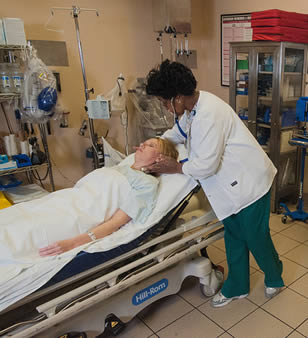 In general, the bracket for the average pay of CNAs is $16,500 to $30,000 annually. The salary varies to different individuals because of several factors which include the work experience requirement, changes in locations, healthcare facilities, employers, and many more. Entry level CNA’s can expect to start at an hourly rate of around $12.
In general, the bracket for the average pay of CNAs is $16,500 to $30,000 annually. The salary varies to different individuals because of several factors which include the work experience requirement, changes in locations, healthcare facilities, employers, and many more. Entry level CNA’s can expect to start at an hourly rate of around $12.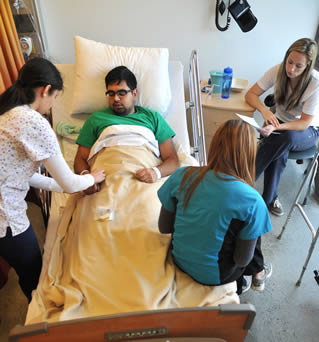 – Location of the job
– Location of the job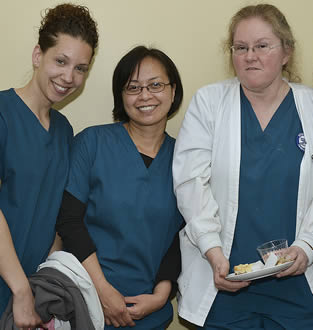 clients under the supervision of registered nurses or LPNs. Part of their duties include taking vital signs like pulse rate and blood pressure, recording food and fluid intake of patients, monitoring catheters, and changing bedpans.
clients under the supervision of registered nurses or LPNs. Part of their duties include taking vital signs like pulse rate and blood pressure, recording food and fluid intake of patients, monitoring catheters, and changing bedpans. To become a good CNA, you have to learn these basic skills:
To become a good CNA, you have to learn these basic skills: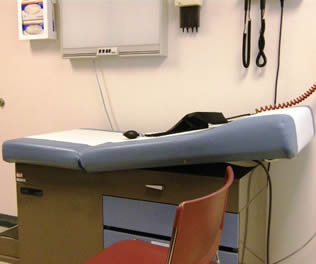 CNA Clinical Skills Test Checklist
CNA Clinical Skills Test Checklist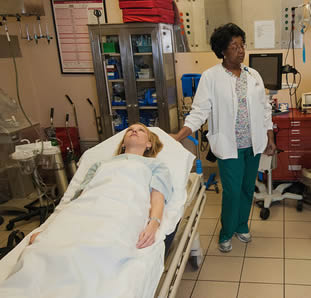 Depending on several factors like the cost of living as well as the local minimum wages, the salary rate of CNA’s are affected. New York is regarded as the second state having the highest average rate of $15.30 per hour because urban areas like this have higher standard of living.
Depending on several factors like the cost of living as well as the local minimum wages, the salary rate of CNA’s are affected. New York is regarded as the second state having the highest average rate of $15.30 per hour because urban areas like this have higher standard of living.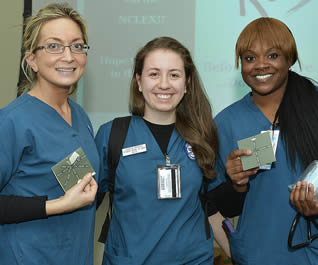 Getting more work experience benefits CNA’s because they will be offered higher salary rates in California. Most of the time CNA’s at entry-level jobs can find it hard to work in hospital or government settings because they are required to have additional training. Experienced CNA’s can enjoy different benefits with a secure job as well as greater opportunities to be able to work in bigger companies and with additional opportunities for advancement.
Getting more work experience benefits CNA’s because they will be offered higher salary rates in California. Most of the time CNA’s at entry-level jobs can find it hard to work in hospital or government settings because they are required to have additional training. Experienced CNA’s can enjoy different benefits with a secure job as well as greater opportunities to be able to work in bigger companies and with additional opportunities for advancement. The registry is also a useful tool for nursing assistants themselves due to the different services that it can provide for them. Some of them are the personal identification process; the supplying of relevant information with regards to their work history; recording any record of abuse and disciplinary action taken against the CNA; and the determining of a nurse aides eligibility to work in a nursing facility. With this information, the worker would learn whether or not to make the necessary steps to correct any personal information contained in their accounts or to make renewal applications if necessary.
The registry is also a useful tool for nursing assistants themselves due to the different services that it can provide for them. Some of them are the personal identification process; the supplying of relevant information with regards to their work history; recording any record of abuse and disciplinary action taken against the CNA; and the determining of a nurse aides eligibility to work in a nursing facility. With this information, the worker would learn whether or not to make the necessary steps to correct any personal information contained in their accounts or to make renewal applications if necessary.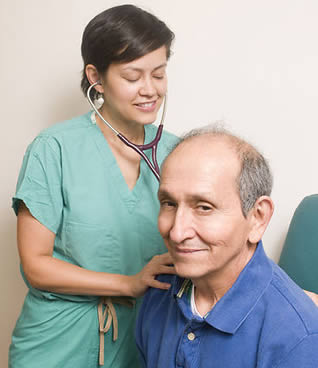 The registry is also useful for nursing aides themselves. Through the registry, they can easily access the Board of Nursing through which the registry is run. Nurse aides can easily provide new information about their employment status and any change of information that they wish to do on their profile.
The registry is also useful for nursing aides themselves. Through the registry, they can easily access the Board of Nursing through which the registry is run. Nurse aides can easily provide new information about their employment status and any change of information that they wish to do on their profile.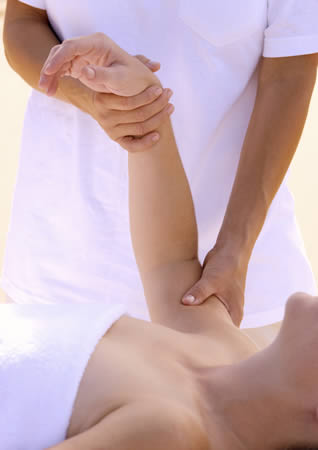 Next, you have to place the patient on a position which will make them easily accessible to you and this can be accomplished in a variety of forms: the high-Fowler position, the supine position, and the semi-Fowler position. Whichever of these positions are comfortable to your patient should be the one adapted.
Next, you have to place the patient on a position which will make them easily accessible to you and this can be accomplished in a variety of forms: the high-Fowler position, the supine position, and the semi-Fowler position. Whichever of these positions are comfortable to your patient should be the one adapted.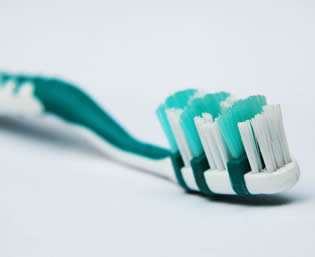 After this, raise the level of the patient’s head up to a 30-degree angle to make it more comfortable for you and for them to get the cleaning process done. Do not try to raise the head of the patient at a greater angle as this may cause them some discomfort.
After this, raise the level of the patient’s head up to a 30-degree angle to make it more comfortable for you and for them to get the cleaning process done. Do not try to raise the head of the patient at a greater angle as this may cause them some discomfort.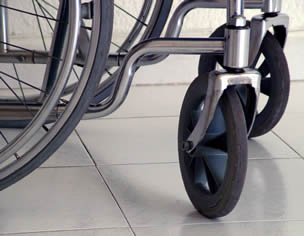 there as well. They must provide the patient with the step-by-step process of how the procedure will be carried out before, during, and after the procedure is done. This will help the patient to become more relaxed and cooperative throughout the process.
there as well. They must provide the patient with the step-by-step process of how the procedure will be carried out before, during, and after the procedure is done. This will help the patient to become more relaxed and cooperative throughout the process.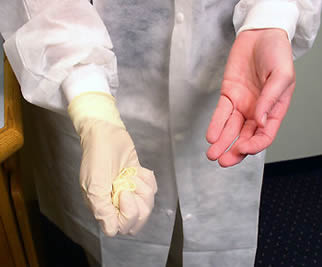 They are made to be used only once and then to be thrown into the trash after use.
They are made to be used only once and then to be thrown into the trash after use.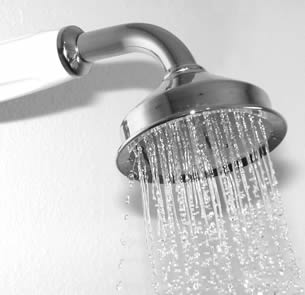 After this, the CNA then proceeds to the bed of the patient and removes any dirty underpads from the patient. Replace the waterproof underpads with fresh and clean ones in order to avoid getting the bed wet from the process. The nurse aide then asks the patient to part their legs in order to gain access to the front perineal area more easily. Part the folds of the labia and clean the inner sides using a clean piece of washcloth which has been dipped in warm water and applied with soap.
After this, the CNA then proceeds to the bed of the patient and removes any dirty underpads from the patient. Replace the waterproof underpads with fresh and clean ones in order to avoid getting the bed wet from the process. The nurse aide then asks the patient to part their legs in order to gain access to the front perineal area more easily. Part the folds of the labia and clean the inner sides using a clean piece of washcloth which has been dipped in warm water and applied with soap.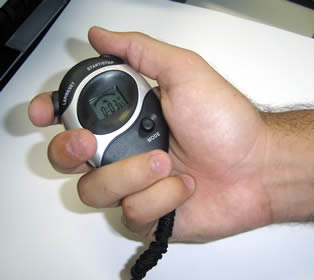
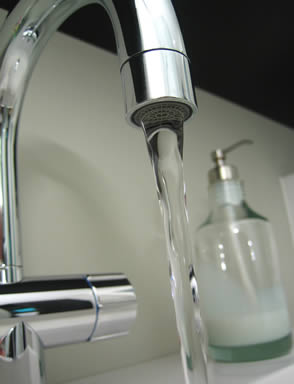 The first step is to introduce yourself to the patient and to explain to them why you are there. Try to give them a mental picture of the step-by-step process which will be performed and try to inform them of the materials that will be used.
The first step is to introduce yourself to the patient and to explain to them why you are there. Try to give them a mental picture of the step-by-step process which will be performed and try to inform them of the materials that will be used.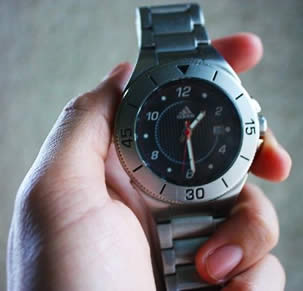 It is important to remember that when you are performing this particular skill, you should incorporate both the direct and the indirect skills that have been taught during the training. There are some who tend to forget about the indirect skills and focus more on the actual taking of the radial pulse. You should take care to incorporate indirect skills during the process if you want to pass the exam or if you want to retain your job. Respecting the privacy, independence, and the safety of your patient are all as important as the direct skill themselves.
It is important to remember that when you are performing this particular skill, you should incorporate both the direct and the indirect skills that have been taught during the training. There are some who tend to forget about the indirect skills and focus more on the actual taking of the radial pulse. You should take care to incorporate indirect skills during the process if you want to pass the exam or if you want to retain your job. Respecting the privacy, independence, and the safety of your patient are all as important as the direct skill themselves. After this, wash your hands thoroughly and put on your personal protective equipment. This is to avoid the spread of infection and to protect the patient as well.
After this, wash your hands thoroughly and put on your personal protective equipment. This is to avoid the spread of infection and to protect the patient as well.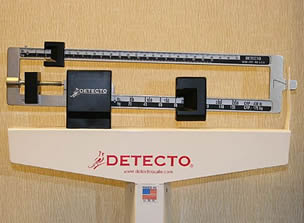 You and the other employee must both wash your hands first and use the appropriate personal protective equipment before handling the patient. Then lower the bed if it is raised on one side until it is on a parallel position with the floor.
You and the other employee must both wash your hands first and use the appropriate personal protective equipment before handling the patient. Then lower the bed if it is raised on one side until it is on a parallel position with the floor.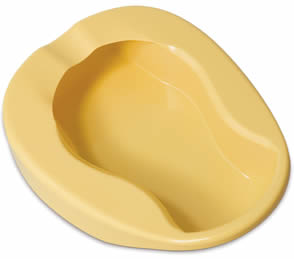 As with other tasks, you will need to greet and introduce yourself to the resident after you entered the room. Make sure that you explain your task very well to the patient so that he would not be surprised when you start with the bedpan. Tell them exactly what you will be doing in each single step of the procedure and then ask them if you can pull the curtains down in order to provide them with some privacy. You always have to ask for their permission before doing anything in their room.
As with other tasks, you will need to greet and introduce yourself to the resident after you entered the room. Make sure that you explain your task very well to the patient so that he would not be surprised when you start with the bedpan. Tell them exactly what you will be doing in each single step of the procedure and then ask them if you can pull the curtains down in order to provide them with some privacy. You always have to ask for their permission before doing anything in their room.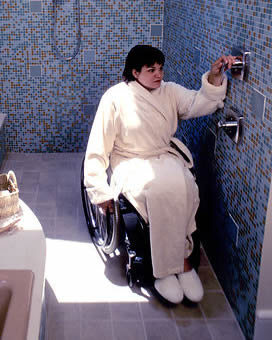 The next step is to tell your patient that you will be undressing them first on their weak side. Depending therefore in which side the patient’s weaker part is, you will start to undress them first. Do not try to do all of the undressing by you and get the patient to participate as much as they can on the whole process. Ask them also if they want to undress by themselves or if they want sufficient privacy while they do so. You should try to maintain as much space as can be comfortable for the patient. Encourage them to take initiative on their own and to exercise themselves in the care of themselves.
The next step is to tell your patient that you will be undressing them first on their weak side. Depending therefore in which side the patient’s weaker part is, you will start to undress them first. Do not try to do all of the undressing by you and get the patient to participate as much as they can on the whole process. Ask them also if they want to undress by themselves or if they want sufficient privacy while they do so. You should try to maintain as much space as can be comfortable for the patient. Encourage them to take initiative on their own and to exercise themselves in the care of themselves.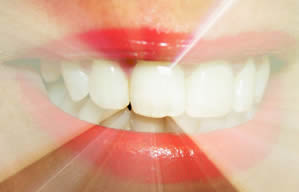 The next step is to bring the two pieces of dentures to the cleaning area or the sink and then line the bottom of the sink with a washcloth. Try to get a warm temperature of water by mixing the hot and cold waters and then try to fill the sink partly with the warm water. After that, clean the dentures using a regular toothbrush and denture cleaning substances. Remove as much dirt as you can from the dentures and try to contact all of the surfaces in the denture. The most important parts to clean are those which come in direct contact with the gums as any leftover bacteria or food can cause infection.
The next step is to bring the two pieces of dentures to the cleaning area or the sink and then line the bottom of the sink with a washcloth. Try to get a warm temperature of water by mixing the hot and cold waters and then try to fill the sink partly with the warm water. After that, clean the dentures using a regular toothbrush and denture cleaning substances. Remove as much dirt as you can from the dentures and try to contact all of the surfaces in the denture. The most important parts to clean are those which come in direct contact with the gums as any leftover bacteria or food can cause infection.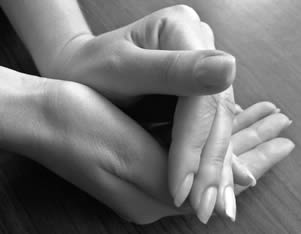 The next step is to let the patient soak their fingers in warm water making sure that they are in a comfortable temperature for the patient. Let them do this for a couple of minutes to loosen up the dirt which may be on the nails.
The next step is to let the patient soak their fingers in warm water making sure that they are in a comfortable temperature for the patient. Let them do this for a couple of minutes to loosen up the dirt which may be on the nails.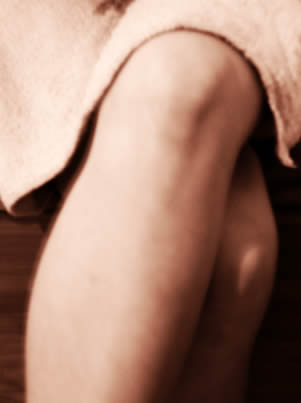 m,The next step is to wash your hands and wear personal protective equipment. This will help to prevent the spread of infection or disease to your patient. Then, with the patient in a lying position, raise the patient’s knee toward their torso and then back to the mattress. This will provide a flexion and extension exercise to the patient’s hips and knees will help maintain flexibility and blood circulation.
m,The next step is to wash your hands and wear personal protective equipment. This will help to prevent the spread of infection or disease to your patient. Then, with the patient in a lying position, raise the patient’s knee toward their torso and then back to the mattress. This will provide a flexion and extension exercise to the patient’s hips and knees will help maintain flexibility and blood circulation.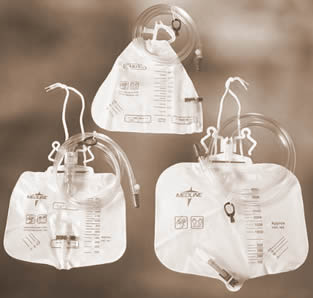 To perform this activity, do the following steps. First, you have to greet the resident by his or her name and then introduce yourself and your purpose of coming to their room. Try to inform the resident about the necessary steps that will be taken in order to empty their urinary drainage bag as well as measure and record their output. After that, you should proceed to wash your hands thoroughly and then put on a fresh set of gloves. The gloves are important when handling the urinary drainage bag, graduate, and bedpan for infection control.
To perform this activity, do the following steps. First, you have to greet the resident by his or her name and then introduce yourself and your purpose of coming to their room. Try to inform the resident about the necessary steps that will be taken in order to empty their urinary drainage bag as well as measure and record their output. After that, you should proceed to wash your hands thoroughly and then put on a fresh set of gloves. The gloves are important when handling the urinary drainage bag, graduate, and bedpan for infection control.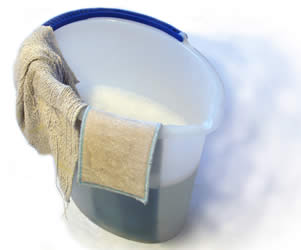 The next step is to prepare the room to provide the patient with sufficient privacy. Pull the curtains down on his windows or close the doors to avoid any untoward incidents. You should also clean the area by removing any unneeded equipment from the bed. After that, ask them to remove their clothes if they are capable or help them out with the process if they cannot. Give them enough independence in this task to their level of ability in order to develop their confidence and independence.
The next step is to prepare the room to provide the patient with sufficient privacy. Pull the curtains down on his windows or close the doors to avoid any untoward incidents. You should also clean the area by removing any unneeded equipment from the bed. After that, ask them to remove their clothes if they are capable or help them out with the process if they cannot. Give them enough independence in this task to their level of ability in order to develop their confidence and independence.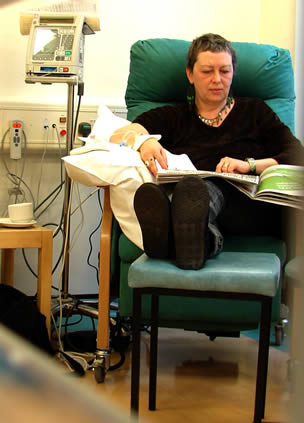 Next, you have to make sure that you are providing sufficient support for the weak arm of the resident while you are undressing and afterwards, dressing them. You should dress the weak arm first taking care that you perform all the necessary steps to lessen the amount of stress that you will put in it while dressing. Make sure that you have gathered up the sleeve of the clothing before trying to put their arm in it. Afterwards, you can proceed with the other pieces of clothing such as the pants and the socks. Do not try to overextend the legs and arms of the resident.
Next, you have to make sure that you are providing sufficient support for the weak arm of the resident while you are undressing and afterwards, dressing them. You should dress the weak arm first taking care that you perform all the necessary steps to lessen the amount of stress that you will put in it while dressing. Make sure that you have gathered up the sleeve of the clothing before trying to put their arm in it. Afterwards, you can proceed with the other pieces of clothing such as the pants and the socks. Do not try to overextend the legs and arms of the resident.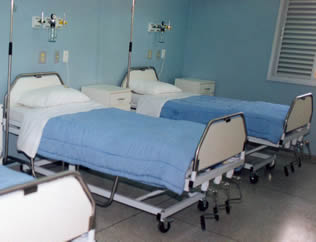 Elevate the bed so you can move the patient on a side lying position much easier. Raise the handrails on the side of the bed so as to ensure your patient’s safety. Make sure that you are telling the resident all the while what you will be doing next so that he will not be taken by surprise when you move his body suddenly.
Elevate the bed so you can move the patient on a side lying position much easier. Raise the handrails on the side of the bed so as to ensure your patient’s safety. Make sure that you are telling the resident all the while what you will be doing next so that he will not be taken by surprise when you move his body suddenly.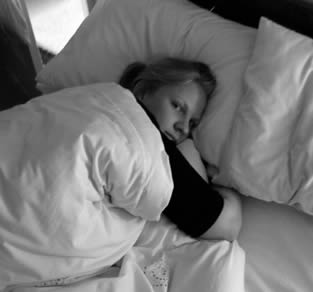 First, you will have to greet and introduce yourself to the patient as you enter his or her room. You will also have to explain what procedure you will be doing, which is to change his sheets. Letting the patient know what will be done will help him relax rather than having him anticipate what you will be doing. It will also provide an outlet for you to get a permission to do so. After this, proceed to washing your hands properly in order to help prevent contagious diseases from spreading to your patient. Wear a fresh pair of gloves before handling any of the patient’s things or bed sheets.
First, you will have to greet and introduce yourself to the patient as you enter his or her room. You will also have to explain what procedure you will be doing, which is to change his sheets. Letting the patient know what will be done will help him relax rather than having him anticipate what you will be doing. It will also provide an outlet for you to get a permission to do so. After this, proceed to washing your hands properly in order to help prevent contagious diseases from spreading to your patient. Wear a fresh pair of gloves before handling any of the patient’s things or bed sheets.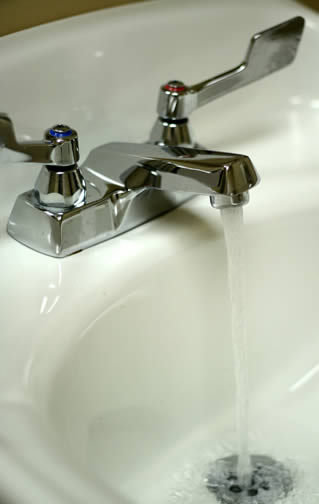 To start washing your hands, you need first to remove all jewelries and accessories that you may have on your wrists or hands. This is to be better able to remove all the dirt, both visible and invisible, which may be hiding on hard to reach areas as well as to prevent any of those which are in your accessories from contaminating the patient. The sweat that accumulates on such accessories are good breeding grounds for some bacteria which may not be removed if you wash your hands wearing them.
To start washing your hands, you need first to remove all jewelries and accessories that you may have on your wrists or hands. This is to be better able to remove all the dirt, both visible and invisible, which may be hiding on hard to reach areas as well as to prevent any of those which are in your accessories from contaminating the patient. The sweat that accumulates on such accessories are good breeding grounds for some bacteria which may not be removed if you wash your hands wearing them.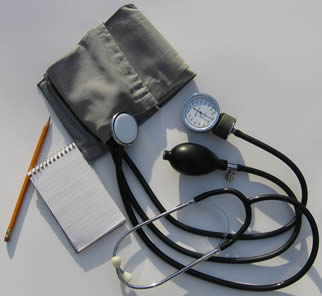 Start by washing your hands and cleaning your equipment. Make sure that you also use the proper personal protective equipment for the procedure. After this, make sure that your patient is in a very peaceful and comfortable surroundings by turning down the volume of the radio or by closing the door to eliminate the noise coming from outside the room. Then, select the appropriate size of cuffs that you will be using on the patient. Wrap it around the arm of the patient just above the elbow area.
Start by washing your hands and cleaning your equipment. Make sure that you also use the proper personal protective equipment for the procedure. After this, make sure that your patient is in a very peaceful and comfortable surroundings by turning down the volume of the radio or by closing the door to eliminate the noise coming from outside the room. Then, select the appropriate size of cuffs that you will be using on the patient. Wrap it around the arm of the patient just above the elbow area. the assessment or care plan which are directed according to the supervisors. It is essential that the nursing assistant must hold responsibility or accountability for the interventions that are being carried out for the clients.
the assessment or care plan which are directed according to the supervisors. It is essential that the nursing assistant must hold responsibility or accountability for the interventions that are being carried out for the clients. grooming, feeding the patient and changing the lines. Orderlies are in charge of patients scheduled for transport to another department either via wheelchair or stretcher.
grooming, feeding the patient and changing the lines. Orderlies are in charge of patients scheduled for transport to another department either via wheelchair or stretcher.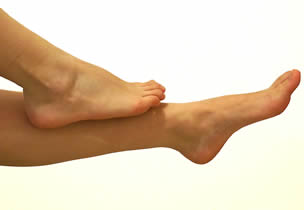 The next thing is to wash your hands and use the proper protective equipment for the procedure. Get the patient on a comfortable sitting position but avoid having their foot touch the bare floor.
The next thing is to wash your hands and use the proper protective equipment for the procedure. Get the patient on a comfortable sitting position but avoid having their foot touch the bare floor.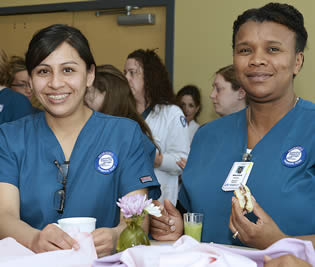 In some states where CNAs are allowed to administer medication and IV as well as work in
In some states where CNAs are allowed to administer medication and IV as well as work in  The initial requirement is the completion of the state-approved training course. It is also important that the individual will be able to pass the state certification exam. The usual training classes for CNA is approximately three to twelve weeks which is a standard 3-credit course and this will already cover the topics regarding what the certified nursing assistant will be performing. The long-duration programs like the ones lasting up to six months have the provision for more in-depth education however these does not really offer extra advantages compared to the short-duration programs.
The initial requirement is the completion of the state-approved training course. It is also important that the individual will be able to pass the state certification exam. The usual training classes for CNA is approximately three to twelve weeks which is a standard 3-credit course and this will already cover the topics regarding what the certified nursing assistant will be performing. The long-duration programs like the ones lasting up to six months have the provision for more in-depth education however these does not really offer extra advantages compared to the short-duration programs. By logging on to the registry, you can have access to the list of nursing assistants who have been certified and licensed by the state of Iowa. By certification, nursing assistants are allowed to work in several healthcare settings wherein they can provide direct patient care to residents. Without this certification, no one is allowed to work in this setting. Hence, employers are encouraged to check the current licensure status of an applicant before hiring them on a nursing facility.
By logging on to the registry, you can have access to the list of nursing assistants who have been certified and licensed by the state of Iowa. By certification, nursing assistants are allowed to work in several healthcare settings wherein they can provide direct patient care to residents. Without this certification, no one is allowed to work in this setting. Hence, employers are encouraged to check the current licensure status of an applicant before hiring them on a nursing facility. – S1 – it is the sound that can be heard during the closure of the tricuspid and mitral valves at the end of the filling of the ventricles and just prior to the start of systolic contraction
– S1 – it is the sound that can be heard during the closure of the tricuspid and mitral valves at the end of the filling of the ventricles and just prior to the start of systolic contraction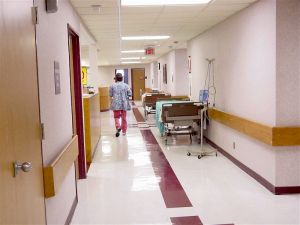 The California Department of Public Health is the agency which maintains the nurse assistant registry, also commonly known as the California Aide & Technician Certification Section or ATCS. They are also the one that is responsible in providing the proper rules and regulations regarding the licensing of nursing assistant. One cannot work as a nursing assistant in the state without first complying with the
The California Department of Public Health is the agency which maintains the nurse assistant registry, also commonly known as the California Aide & Technician Certification Section or ATCS. They are also the one that is responsible in providing the proper rules and regulations regarding the licensing of nursing assistant. One cannot work as a nursing assistant in the state without first complying with the 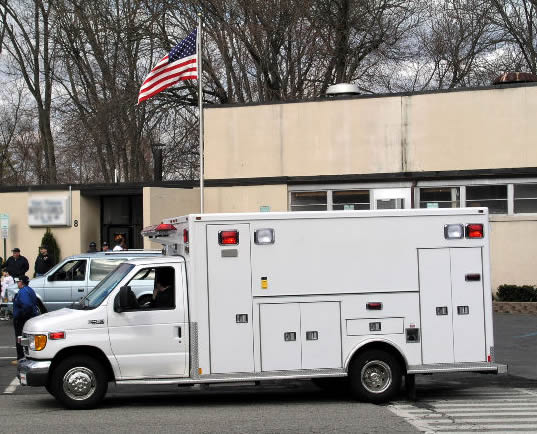 A Nurse Aide Registry is an important factor in the field of healthcare. Without it, it will not be easy to verify one’s status as a certified nursing assistant and may expose certain individuals to the risk of hiring people before any verifiable information has been obtained. We all know that there are certain people who will try to fake credentials just to get a job and this will be unfair, both to more deserving applicants as well as to the security of the patient that the nursing assistant will be handling.
A Nurse Aide Registry is an important factor in the field of healthcare. Without it, it will not be easy to verify one’s status as a certified nursing assistant and may expose certain individuals to the risk of hiring people before any verifiable information has been obtained. We all know that there are certain people who will try to fake credentials just to get a job and this will be unfair, both to more deserving applicants as well as to the security of the patient that the nursing assistant will be handling.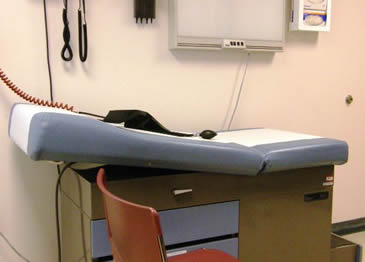 It is important to have an easily accessible site where one can get important information regarding a state’s health office. This is one of the main concerns of the state of Alaska and has made the Division of Corporations, Business and Professional Licensing one of the institutions which will give the public easy access to records with regards to the licensing of health workers. One can easily find this website by keying in the appropriate words in search engines. The website offers free information to those who are looking for the current status of licensure of different workers who wish to apply as certified nurse assistants in the state.
It is important to have an easily accessible site where one can get important information regarding a state’s health office. This is one of the main concerns of the state of Alaska and has made the Division of Corporations, Business and Professional Licensing one of the institutions which will give the public easy access to records with regards to the licensing of health workers. One can easily find this website by keying in the appropriate words in search engines. The website offers free information to those who are looking for the current status of licensure of different workers who wish to apply as certified nurse assistants in the state.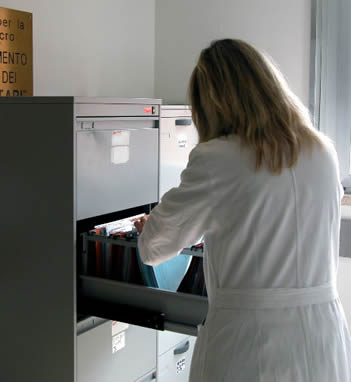 The Registry is maintained by the Alabama Department of Public Health which is also responsible for the regulation and the licensure of all applicants who are able to satisfy the state’s requirements for healthcare providers. Hence, if you want to be included in the registry, you first have to undergo the various trainings and examinations in order to be entered into the registry. Those wishing to become certified nurse assistants must comply with the age, training, criminal background check, and pass the licensure examination for certified nurse assistants. After complying with these, you will be notified of your current status by visiting the online Registry which can be accessed by providing the proper information. You can read more about all of the current
The Registry is maintained by the Alabama Department of Public Health which is also responsible for the regulation and the licensure of all applicants who are able to satisfy the state’s requirements for healthcare providers. Hence, if you want to be included in the registry, you first have to undergo the various trainings and examinations in order to be entered into the registry. Those wishing to become certified nurse assistants must comply with the age, training, criminal background check, and pass the licensure examination for certified nurse assistants. After complying with these, you will be notified of your current status by visiting the online Registry which can be accessed by providing the proper information. You can read more about all of the current  Nurse aide training is a prerequisite in becoming a nursing assistant if you do not have a basic nursing education or its equivalent. You will have to look for training facilities which have been approved by the state’s Board of Nursing and is accredited by the state to provide such training. You must meet the required number of hours of training in both the classroom and clinical setting. You can apply to take the exams also if you have finished a related course from outside of the United States provided that it meets the educational standards which are used here. You only need to furnish a copy of your transcript of records and other pertinent documents that will be requested from you. You can read more about current
Nurse aide training is a prerequisite in becoming a nursing assistant if you do not have a basic nursing education or its equivalent. You will have to look for training facilities which have been approved by the state’s Board of Nursing and is accredited by the state to provide such training. You must meet the required number of hours of training in both the classroom and clinical setting. You can apply to take the exams also if you have finished a related course from outside of the United States provided that it meets the educational standards which are used here. You only need to furnish a copy of your transcript of records and other pertinent documents that will be requested from you. You can read more about current  As to other rules, they are the same with those which can be found in other states. The applicant should be at the proper age, should be physically capable of meeting the demands of the job, and should have a state and federal background check. They should also be able to pass the certification examinations within the prescribed period. Another benefit that one can get by applying for a certification in Florida is that they can be reimbursed for any expense incurred for their training if they can be employed within a short period of time after passing the test. They also have more lenient reciprocity standards compared to other states. Hence, the state is attracting more CNA applicants aside from the fact that they are one of the highest paying states when it comes to nursing assistants.
As to other rules, they are the same with those which can be found in other states. The applicant should be at the proper age, should be physically capable of meeting the demands of the job, and should have a state and federal background check. They should also be able to pass the certification examinations within the prescribed period. Another benefit that one can get by applying for a certification in Florida is that they can be reimbursed for any expense incurred for their training if they can be employed within a short period of time after passing the test. They also have more lenient reciprocity standards compared to other states. Hence, the state is attracting more CNA applicants aside from the fact that they are one of the highest paying states when it comes to nursing assistants.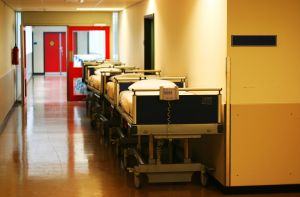 nursing assistant in any healthcare facility. This is to ensure that the quality of services that will be delivered by an applicant is one that complies with the state’s standards and that the applicant does not have any disqualifications as well. Having information regarding a CNAs status of certification is a very important factor in deciding whether to accept him or not with regards to a certain application. The registry being available to the public in general makes it easier for people to get informed about the healthcare workers which are available to them.
nursing assistant in any healthcare facility. This is to ensure that the quality of services that will be delivered by an applicant is one that complies with the state’s standards and that the applicant does not have any disqualifications as well. Having information regarding a CNAs status of certification is a very important factor in deciding whether to accept him or not with regards to a certain application. The registry being available to the public in general makes it easier for people to get informed about the healthcare workers which are available to them.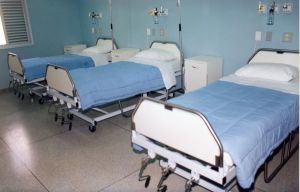 A nurse assistant registry is a very important tool not just for the nursing assistants themselves but also to the pubic who will be requesting for their services as well. Having sufficient information can be one of the best protections against any substandard healthcare services. Knowing that the state has created stringent standards for one to acquire a nursing aide certification, one can rest assured that the person who is included in the nurse assistant registry is one who has passed all that qualifying standards. No one is allowed to work as a nurse aide in the state without being entered first in the state’s nurse assistant registry.
A nurse assistant registry is a very important tool not just for the nursing assistants themselves but also to the pubic who will be requesting for their services as well. Having sufficient information can be one of the best protections against any substandard healthcare services. Knowing that the state has created stringent standards for one to acquire a nursing aide certification, one can rest assured that the person who is included in the nurse assistant registry is one who has passed all that qualifying standards. No one is allowed to work as a nurse aide in the state without being entered first in the state’s nurse assistant registry.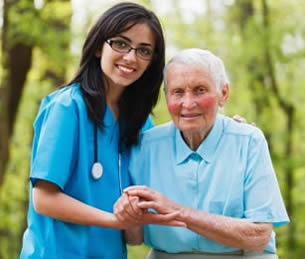 render direct restorative care as well as delegated therapy tasks and these include active and passive range of motion, special positioning techniques, ambulating, bladder restraining, and restorative dining.
render direct restorative care as well as delegated therapy tasks and these include active and passive range of motion, special positioning techniques, ambulating, bladder restraining, and restorative dining.
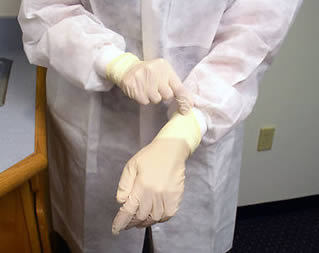 The registry serves different purposes to anyone who visits the page. This includes providing relevant information to nursing assistant themselves as well as to potential employers also. The registry is a good source of information with regards to training, certification, renewal, and reciprocity needs of a nursing assistant. It is also a good source for those who wish to hire a licensed health care worker in Utah. It contains a list of all the possible candidates for CNA work as well as those who have had issues with abuse, neglect, or misappropriation of property in a certain nursing facility.
The registry serves different purposes to anyone who visits the page. This includes providing relevant information to nursing assistant themselves as well as to potential employers also. The registry is a good source of information with regards to training, certification, renewal, and reciprocity needs of a nursing assistant. It is also a good source for those who wish to hire a licensed health care worker in Utah. It contains a list of all the possible candidates for CNA work as well as those who have had issues with abuse, neglect, or misappropriation of property in a certain nursing facility.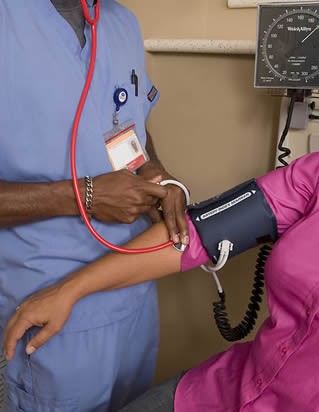 The website also contains helpful links which they can access to make their search easier especially if there had been any recent incidents which may have a significant impact on the registry status of the nurse aide. This includes links which leads to the Abuse Registry, Monthly Disciplinary Actions, and Licensure Verification sites which can make your search easier. It is important for employers especially to constantly look up these links in order to maintain a good set of employees on their facilities. They can also get constant updates about the recent issuances of the Department of Health.
The website also contains helpful links which they can access to make their search easier especially if there had been any recent incidents which may have a significant impact on the registry status of the nurse aide. This includes links which leads to the Abuse Registry, Monthly Disciplinary Actions, and Licensure Verification sites which can make your search easier. It is important for employers especially to constantly look up these links in order to maintain a good set of employees on their facilities. They can also get constant updates about the recent issuances of the Department of Health.